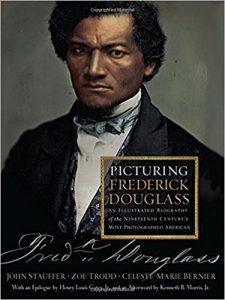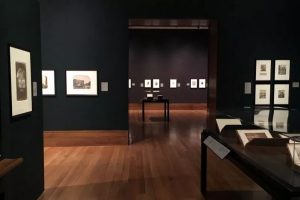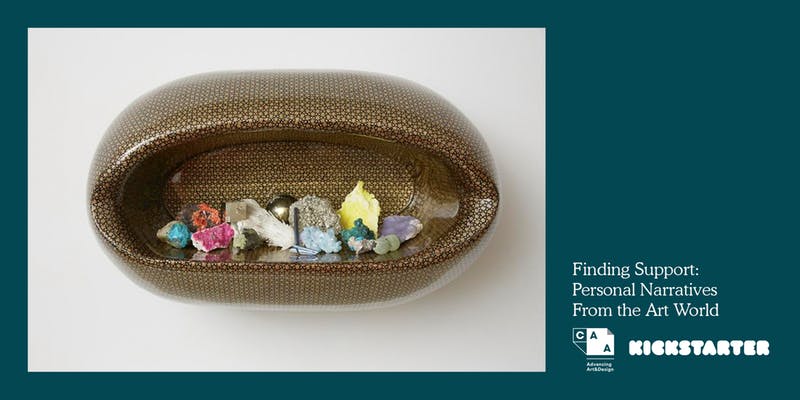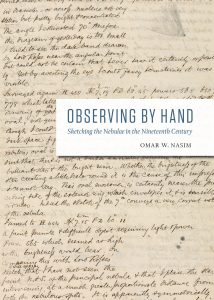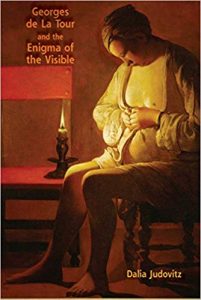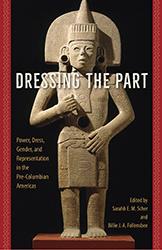CAA News Today
News from the Art and Academic Worlds
posted by CAA — Sep 12, 2018
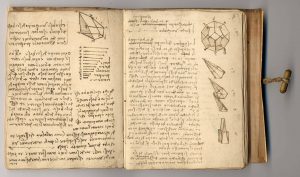
Codex Forster II , Leonardo da Vinci, late 15th – early 16th century, Italy. Museum no. Forster MS.141. © Victoria and Albert Museum, London, via Colossal
Here’s How You Can Help Document Rio’s National Museum Collections after the Catastrophic Fire
Museum officials are asking the public for help. (Forbes)
Can You Train Your PhDs for Diverse Careers When You Don’t Have One?
“Being a professor is the only job I ever tried to get. How can I teach my students about something I don’t know?” (Chronicle Vitae)
How to Teach Ancient Art in the Age of #MeToo
Misogynist imagery in ancient art raises questions that demand addressing today. (Hyperallergic)
These Cultural Treasures Are Made of Plastic. Now They’re Falling Apart.
Museum conservators are racing to figure out how to preserve these artworks. (New York Times)
More High School Grads Than Ever Are Going to College, but One in Five Will Quit
New data re-emphasizes the importance of student retention efforts. (The Hechinger Report)
Recently Digitized Journals Grant Visitors Access to Leonardo da Vinci’s Detailed Engineering Schematics and Musings
The Victoria and Albert Museum in London has made in-depth scans of da Vinci’s notebooks available online. (Colossal)
Affiliated Society News for September 2018
posted by CAA — Sep 11, 2018
Affiliated Society News shares the new and exciting things CAA’s affiliated organizations are working on including activities, awards, publications, conferences, and exhibitions.
We’re seeking new organizations to join CAA’s Affiliated Societies. Click here to learn more.
Mid-America College Art Association (MACAA)
Upcoming MACAA Conference: Oct 4—6, 2018: Techne Expanding New / Tensions New / Terrains New / Tools @ The University of Nebraska-Lincoln
The 2018 MACAA Conference will explore wide-ranging interpretations of technology and its use and impact on the teaching, making, and performing art as well as the broader human experience. Recognizing that technology has art and craft at its root (techne) and isn’t limited just to bigger, better, or faster tools and products, we will examine how we embrace or resist technology, how we celebrate or critique it, and consider its promise as well as its limits.
Reserve your room for the conference at the Embassy Suites by Hilton Lincoln. Tickets for the conference can be purchased through Eventbrite. Inquiries about the conference can be sent to Sandra Williams, Associate Professor and Conference Chair, swilliams2@unl.edu.
Get your MACAA membership registration here.
Upcoming MACAA Members’ Exhibition will be held at the Eisentrager-Howard Gallery at the University of Nebraska-Lincoln, October 3-19, 2018.
Upcoming for CAA 2019: MACAA’s CAA Affiliate Session
“Respond and Adapt: A Fuse of Art and the Other”
Co-chairs: Julie Marcelle Abijanac, Columbus College of Art & Design; Chung-Fan Chang, Stockton University
Wed, February 13, 2:00—3:30 PM, Room: Concourse G
A2RU
a2ru Circuits Webinar: Navigating Your Educational Path Toward an Interdisciplinary Career
Thursday, October 4, 2018
2:00-3:00pm ET
Register HERE
What might be needed to create an interdisciplinary career guide or toolkit for students who are looking toward a modern work life? This webinar will include alum from the a2ru Emerging Creatives Student Summits discussing both their interdisciplinary paths and experiences and what they would like to have known or had in support of their educational goals as an undergraduate student.
a2ru Annual National Conference: Arts Environments: Design, Resilience, and Sustainability
November 1-3, 2018
Hosted by University of Georgia (Athens, GA)
Registration now open!
The 2018 theme, Arts Environments: Design, Resilience, and Sustainability, is an invitation to explore the relationship between creativity and diverse cultural locations, by framing discussions about design, resilience, and sustainability in the context of interdisciplinary artistic and environmental practice. The theme offers an opportunity to think broadly about the ecology of the arts and their environments, in terms of performance, design, and engineering. A land and sea grant institution inextricable from the town of Athens and the broader ecologies of Georgia and the Southeast, the University of Georgia will provide a rich context for thinking creatively about Arts Environments globally. The 2018 conference will also include exhibits, installations, performances, and events throughout.
Historians of Islamic Art Association
The Historians of Islamic Art Association is delighted to annoucene that it’s sixth biennial symposium, “Border Crossing,” will be held at Yale University from October 25-27, 2018. Professor Zainab Bahrani will deliver the keynote lecture,“Ascent of Images: Mapping Time at the Amadiya Akropolis.” The symposium will bring together an international group of established and emerging scholars of Islamic art and architecture to present new research on the theme of “Border Crossing.” Very often the field has been defined as one centered on select regions of the Middle East, South Asia, and Central Asia, and focusing on traditional media and categories, such as the decorative arts, manuscript studies, and architecture. Less attention has been paid to regions on the so-called peripheries, including, for example, Southeast Asia and sub-Saharan Africa, or to disciplines that are not often associated with the field, such as film and anthropology.
“Border Crossing” will rethink the field of Islamic art and architecture by interrogating the ideas of translation, transmission, and transgression. Among the questions that will be asked are: How can this lens help us rethink works that form the “canon” of Islamic art? What is at stake in crossing disciplinary borders? What is lost and what is gained in abandoning traditional academic parameters? What may be learned through literal border crossings, whether they are by conservation authorities or refugees? As the works of several contemporary artists show, border crossings are ultimately ethical positions taken to evince the human condition itself. They thus provide potential to rethink the arts and cultures of the Islamic world, as well as the ways in which we study them today.
For more information, and to register, visit: hiaa2018.yale.edu
Association for Textual Scholarship of Art History (ATSAH)
William R. Levin (Centre College, emeritus) authored “The Bigallo Triptych: A Document of Confraternal Charity in Fourteenth-Century Florence” in Confraternitas, vol. 29, no. 1 (Spring 2018), pp. 55-101, with eight reproductions. The article considers the style, form, content, commission, and purpose of a long-recognized masterpiece of early Italian painting within the theological climate of its time, and is also available online at https://jps.library.utoronto.ca/index.php/confrat/article/view/29895. The journal is published by the Centre for Reformation and Renaissance Studies on behalf of the Society for Confraternity Studies, both headquartered at the University of Toronto.
Liana De Girolami Cheney (UMASS Lowell emerita), Visiting Researcher in Art History at SIELAE, Universidad de Coruña, Spain and Universittà di Aldo Moro, Bari, Italy
“Lavinia Fontana’s Cleopatra the Alchemist,” Journal of Literature and Art Studies (August 2018), Vol. 8. No. 8, pp. 1-22.
AICA-USA
AICA-USA is excited to participate in a members-only viewing of Shimon Attie’s public installation Night Watch. More Art, in collaboration with organizational partner, Immigration Equality, will host a VIP cocktail reception for AICA-USA members on the evening of Monday, September 24. This exclusive reception will include a walk as a group to the waterfront to view the work as well as the opportunity to meet with the artist, project participants, and More Art organizers. AICA-USA thanks More Art, Immigration Equality, and Shimon Attie for this special opportunity.
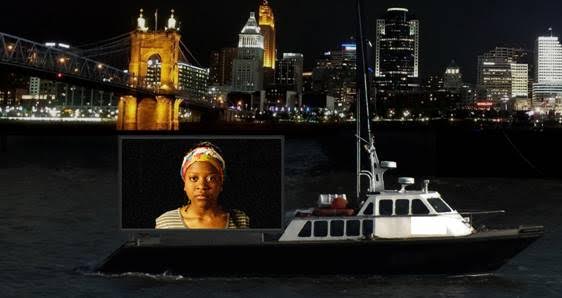
SECAC
The 74th Annual SECAC Conference, hosted by the University of Alabama at Birmingham, will be held October 17 through 20, 2018. More than 450 papers—on studio art, art history, art education, and graphic design—will be presented in 120 sessions. Offsite events include a keynote address by Andrew Freear of Auburn University’s Rural Studio and a reception to view the exhibition Third Space/Shifting Conversations about Contemporary Art at the Birmingham Museum of Art. The annual SECAC Artist’s Fellowship and Juried Exhibitions’ reception at will be held at UAB’s Abroms-Engel Institute for the Visual Arts. More information and conference registration are available at https://www.secacart.org.
Society of Historians of Eastern European, Eurasian, and Russian Art and Architecture (SHERA)
Society of Historians of Eastern European, Eurasian, and Russian Art and Architecture (SHERA) is pleased to announce the SHERA-sponsored session Looking East: Russian Orientalism in a Global Context, chaired by Dr. Maria Taroutina (Yale-NUS College) and Dr. Allison Leigh (University of Louisiana at Lafayette) at the College Art Association 2019 Annual Conference in New York City, New York Hilton Midtown, February 13-16, 2019. SHERA Business Meeting at the CAA Conference will take place on February 15, Madison Suite 12:30 to 1:30 pm, New York Hilton Midtown.
SHERA Business Meeting at the ASEEES 50th Annual Convention, 6-9 December, Boston, MA 2018, is scheduled on December 7, 8:00 to 9:30pm, 3 Brandeis, Boston Marriott Copley Place. The SHERA Travel Grant to the ASEEES Convention, in the amount of $ 1,500 made possible by a generous anonymous donation, has been awarded to Denis Stolyarov, a PhD student at The Courtauld Institute of Art, London UK, presenting his paper “Contested Spaces: Radical Potential in the Post-Soviet Art Gallery.”
Midwest Art History Society
The Midwest Art History Society (MAHS) Fall Board Meeting will take place October 12 and 13, 2018 in Chicago. Plans are well underway for the 2019 annual conference which will be held in Cincinnati. Look for the conference call for papers to be distributed in the member’s newsletter appearing soon. In the meantime, you can check for updates, find membership information, and locate documentation of previous conferences at our website www.mahsonline.org.
At MAHS’s recent conference in Indianapolis (April 5-7, 2018) Lauren DeLand, Assistant Professor Art History, Indiana University Northwest, received the MAHS Emerging Scholar Distinguished Presentation Award for her paper “A Fig Leaf for Jeff Koons: Pornography, Privacy, and Made in Heaven.” The award is granted to an outstanding paper presented at the MAHS annual conference by an art historian who received his or her PhD within the last five years.
Pacific Arts Association (PAA)
Pacific Arts Association XIII International Symposium, RESILIENCE: sustaining, re-activating and connecting culutre. March 25-28, 2019, Brisbane, Australia. Call for Full Sessions and Curated Panels, Demonstrations, Activations, Performances and Workshops. Hosted by Queensland Museum, State Library of Queensland, Queensland Art Gallery, Gallery of Modern ARt and Queensland Performing Arts Centre. For more information see: www.pacificarts.org
Curatorial Research Fellowship at MARKK, Museum am Rothenbaum World Cultures and Arts. Applications due September 30th 2018 – Fellowship should start in January 2019. The application materials should be written in English and sent in a single pdf file. They should include a research proposal specifying the thematic focus (max. 3000 words), a bibliography, a curriculum vitae, 3 references, and a cover letter explaining the motivation for the application. Please address inquiries to Johanna Wild Museum am Rothenbaum
Phone: +49 (40) 428 879 -635
Email: johanna.wild@markk-hamburg.de
A new Scholarship in Oceanic Studies has been launched. The Anthony JP Meyer Fellowship is intended for students and non-statutory researchers, with proven competence in the processing and analysis of non-Western art or with significant experience in the fields of history, art, ethnography or archeology. The successful applicant will undertake a study in the collections of the Quai Branly Museum or in anoth French museum on objects of art and ethnography of Oceania. Further information: http://www.meyeroceanic.art/
Association of Art Museum Curators Foundation
The AAMC Foundation Engagement Program for International Curators, made possible by major support from the Terra Foundation for American Art, will open its application portal on Tuesday, September 11. Through fostering international relationships between curators, AAMC aims to not only provide opportunities for professional development and exchange, but also expand and strengthen the international curatorial community and amplify the curatorial voice in the global dialogue between museum professionals.
The 12-month Program provides a framework for two curator pairings to interact regularly, reflecting on and developing their self-identified areas of advancement with each other. The Program includes travel funding for International Awardees, a participant stipend for US Liaisons, networking, and more, which are outlined in greater detail in the Program Components area of the application.
At the core of this Program is a year-long partnership between a non-US based curator (International Awardee) and a US-based curator (US Liaison) dedicated to professional development and exchange in areas including but not limited to research, project management, leadership development, cross-border exhibitions, loans, fundraising, marketing, dealer and donor relationships.
All applicants must be art curators working on or having worked within exhibitions and projects that explore historic American Art (c. 1500-1980), including painting; sculpture; works on paper, including prints, drawing and photography; decorative arts; and excluding architecture; design; and performance. Additional requirements include a minimum of 50% of the time for/with non-profit organizations will be considered. Please note that curators working in four-wall collecting and non-collecting, community based, and non-four wall organizations, at any location in the globe are eligible.
Visit the Program page to learn more about the Program’s components: https://www.artcurators.org/page/GrantsTerra
The online application for International Awardees and US Liaisons opens on Tuesday, September 11, 2018, and are due by Monday, November 5, 2018 at 12pm ET.
Association of Print Scholars
The Association of Print Scholars is pleased to announce the scholars and papers selected for inclusion in its affiliated society panel at the College Art Association conference taking place February 13-16, 2019 in New York.
Chaired by Christina Michelon (University of Minnesota, Twin Cities), the APS panel Coloring Print: Reproducing Race Through Material, Process, and Language investigates the racialized dimensions of print and printmaking. The medium has played a central role in the ideological founding of “race” and its hierarchies through visual representation. However, print’s materials, processes, and the language we use to describe them interface with conceptions of race in ways that require further study. For example, the term “stereotype” originated in the printing trade but has since evolved to mean an oversimplified general idea, often with pejorative racial connotations; the invention of chromolithography in the nineteenth century offered a more nuanced way of representing skin tones but simultaneously enabled the increased circulation of racist imagery; the rabid appreciation and collection of Japanese prints in the West altered artistic production globally while idealizing Eastern cultures; anthropological sketches and watercolor studies of native peoples were routinely translated to print, widely reproduced, and used as tools of imperialism and colonialism.
Coloring Print examines global printmaking traditions that advance our understanding of the role of the medium in the social construction of race. The papers chosen include “Red Ink: Ethnographic Prints and the Colonization of Dakota Homelands” by Annika Johnson (University of Pittsburgh); “Sites of Contest and Commemoration: The Printed Life of Richard Allen, America’s Early Race Leader” by Melanee C. Harvey (Howard University); “A Franco-Indian Album: Firmin Didot’s Indian Paintings and Le Costume Historique’s Chromolithography (1888)” by Holly Shaffer (Brown University); and “The White Native Body in Asia: Woodcut Engraving and the Creation of Ainu Stereotypes” by Christina M. Spiker (St. Catherine University).
Save the date: APS will be holding a members’ meeting and reception at C.G. Boerner Gallery, 526 West 26th Street, Rm 304, New York, on Friday, October 26, 2018 from 5:30-7 PM, with a tour of their new exhibition featuring the work of the early 20th century French printmaker J.E. Laboureur. Please feel free to join us if you are a current member of APS, or are interested in learning more about the organization!
Visual Resources Association (VRA)
The Visual Resources Association is a multidisciplinary organization dedicated to furthering research and education in the field of image management within the educational, cultural heritage, and commercial environments that has been affiliated with CAA for many years (http://vraweb.org/).
The next VRA international conference for image media professionals will take place at the Doubletree Hotel in the Little Tokyo area of downtown Los Angeles on March 26-29, 2019. We welcome CAA members as well as any intensive image users and like-minded information professionals to join in on what will be an exciting schedule of workshops, sessions, meetings, tours, and social events in Southern California.
At the LA conference, the organization’s highest awards will be conferred and a call for nominations for both the Distinguished Service Award and the Nancy DeLaurier Award–is now open with a deadline of November 2, 2018. The Distinguished Service Award honors an individual who has made an outstanding career contribution to the field of visual resources and image management. The Nancy DeLaurier Award, named for one of the pioneers of the visual resources profession, honors either a single individual or a group of visual resources professionals for distinguished achievement in the field. “Achievement” is measured by immediate impact, and may take the form of published work, oral presentation, project management, software development, technology application, web site creation, or other outstanding effort or project. Although nominations for the awards are initiated by Visual Resources Association members, the nominees need not be members of the Association. (http://vraweb.org/call-for-2019-nominations-distinguished-service-award-nancy-delaurier-award/)
For more information about the important work and professional development activities sponsored by the Visual Resources Association or the VRA Foundation, please contact Maureen Burns, VRA’s CAA Affiliate Representative at moaburns@gmail.com or 310-489-3792.
Design Incubation
Portfolio Success: Strategies for Professional Development
Saturday, September 22, 2018.
2pm–5pm.
Type Directors Club
347 W 36th St., #603,
New York, NY 10018
Join industry professionals and design educators for a panel discussion on creating effective design portfolios. We will explore the role portfolios play in a successful design career now and in the future and will ask, are traditional portfolios still relevant? If so, what does a successful portfolio look like and what kind of projects should be included? Panelist will discuss what clients and employers want to see and which abilities industry leaders consider most important? You are invited to join the discussion as we look at new ways of teaching and explore emerging trends in effective portfolio development.
PANELISTS
Christina Black
Vice President, Creative Director
Showtime Networks Inc.
Michael McCaughley
Lead Designer at OCD
Holly Tienken
Assistant Professor
Communication Design
Kutztown University of Pennsylvania
Peter Lusch
Assistant Professor
Dept of Art, Architecture & Design
Lehigh University
Event details: https://designincubation.com/design-events/portfolio-success-strategies-for-professional-development/
Event Registration: https://www.eventbrite.com/e/portfolio-success-strategies-for-professional-development-tickets-48564564921
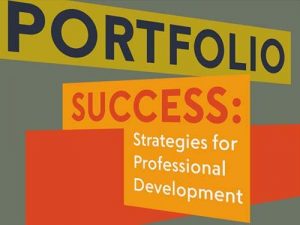
Society of Architectural Historians (SAH)
The Society of Architectural Historians has announced the recipients of the 2018 SAH/Mellon Author Awards. These awards are granted to scholars publishing their first monograph on the history of the built environment and help defray the expenses of image licensing, reproduction, and creation of original drawings and maps. SAH awarded a total of $17,498 to the following forthcoming book projects: Irit Katz, The Common Camp: Instruments of Power and Resistance on the Edge of Architecture (University of Minnesota Press), Conrad Kickert, Dream City: Creation, Destruction and Reinvention in Downtown Detroit (The MIT Press), Mariana Mogilevich, The Invention of Public Space: Design and Politics in Lindsay’s New York (University of Minnesota Press), and Ünver Rüstem, Ottoman Baroque: The Architectural Refashioning of Eighteenth-Century Istanbul (Princeton University Press).
SAH is accepting applications for the H. Allen Brooks Travelling Fellowship, which allows a recent graduate or emerging scholar to study by travel for one year. The fellowship is designed to provide an opportunity for a recent graduate with an advanced degree or an emerging scholar to see and experience architecture and landscapes firsthand, think about their profession deeply, and acquire knowledge useful for their future work. The application deadline is September 30, 2018.
SAH has announced the recipients of the 2018 SAH Awards for Architectural Excellence. Established in 2010, these awards recognize individuals for outstanding achievements in architectural practice and academic study. The 2018 winners include architects Cynthia Weese, FAIA, Robert A.M. Stern, FAIA, Harry Hunderman, FAIA, and Deborah Slaton. The recipients will be recognized at the 9th annual SAH Awards Gala on Friday, November 2, 2018, at The Arts Club of Chicago. Tickets are on sale now.
Community College Professors of Art and Art History
The Community College Professors of Art and Art History is looking for submissions for our panel at the upcoming FATE (Foundations in Art Theory and Education) Conference in April 2019. Our session, Professional Practice/Professional Foundations will be accepting submissions until September 25 on the Fate website (we are session number 42). We look forward to seeing everyone at our session and business meeting at the CAA Conference in February 2019 in New York. Need more information? Questions? Contact: Susan Altman saltman@middlesexcc.edu
Foundations in Art: Theory and Education (FATE)
Deadline: September 25: Submit your paper proposals for panels and workshops! FATE’s 17th Biennial Conference, “Foundations in Flux,” will be hosted by Columbus College of Art & Design in Columbus, Ohio on April 4th-6th, 2019. http://www.foundations-art.org/conferences
Submissions: https://www.foundations-art.org/conference-registration
Join us September 14-15, 2018, for a Regional FATE Conference at the University of Central Florida in Orlando, Florida for a symposium to share your new and developing pedagogical approaches, curriculum, and projects. This will provide the unique opportunity to hear fellow art colleagues share their experiments, successes, and failures and how they will continue to change in the future. https://www.foundations-art.org/regional-events
September 22: FATE Regional Forum: FREE: Creating the right foundations program sometimes feels like a moving target based on changing technology and theory in upper level programs. Stevenson University will host this regional forum and it will include a presentation and discussion by Catherine Behrent on the recent overhaul of MICA’s foundation program. Lori Rubeling, from Stevenson, will be discussing strategies for introducing practice-led research in foundations. To attend, please RSVP by Monday, September 10th. Please contact Lori Rubeling, LRubeling@stevenson.edu or Heidi Neff, hneff@harford.edu to RSVP.
New in caa.reviews
posted by CAA — Sep 07, 2018
Lauren Kroiz reviews Picturing Frederick Douglass: An Illustrated Biography of the Nineteenth Century’s Most Photographed American by John Stauffer, Zoe Trodd, and Celeste-Marie Bernier. Read the full review at caa.reviews.
André Dombrowski writes about Color in the Age of Impressionism: Commerce, Technology, and Art by Laura Anne Kalba. Read the full review at caa.reviews.
Eva McGraw discusses Paper Promises: Early American Photography by Mazie M. Harris. Read the full review at caa.reviews.
Hunter O’Hanian in Conversation with Eric Segal, Director of Education and Curator of Academic Programs at the Harn Museum
posted by CAA — Sep 04, 2018
CAA’s executive director, Hunter O’Hanian, recently visited the Harn Museum of Art in Gainesville, Florida to speak with Eric Segal, the museum’s director of education and curator of academic programs, about the role of academic art museums and Resources for Academic Art Museum Professionals (RAAMP).
A project of CAA supported by the Andrew W. Mellon Foundation, RAAMP aims to strengthen the educational mission of academic museums and their parent organizations by providing a publicly accessible repository of resources, online forums, and relevant news and information.
Watch and read the interview below.
Hunter O’Hanian: Hello everybody. My name’s Hunter O’Hanian and I’m the director of the College Art Association. I’m very pleased today to be with Eric Segal, who is the director of education and curator of academic programs here at the Harn Museum in Gainesville, Florida. Hello, Eric. How are you?
Eric Segal: Hunter, I’m doing well. It’s great to have you here in Gainesville.
HO: Well, it’s absolutely beautiful. It’s been great to be spending time here and to go through the museum. Before we start, tell us a little bit about your background. I know you’ve been a CAA member since you were in graduate school, but tell us a little bit about your professional background.
ES: Sure. CAA since 1993.
HO: Yay.
ES: I actually started my college career as a computer engineering major. So, it was a big change when my sister made me take an art history class and that led me into art history, and I studied American art subsequently at UCLA, Masters.
HO: And, I think you won a Terra award, too.
ES: I was really fortunate to have a Terra award in 1999.
HO: Great.
ES: And that was very exciting for me and helped me in my studies. Following the completion of my doctoral dissertation, I took an assistant professor position here at University of Florida. So, I was in the art history department teaching undergraduate and graduate courses in American art, African American art, illustration and even occasionally about museum theory. Later, in 2010, a position opened up in the museum where I was able to take on museum practice a bit more. That position was the academic programs position, which had just been created as the museum realized it was important to draw closer to the university. At that time, before the position opened up, there were perhaps a few dozen courses using the museum, because there was no one doing the outreach to work with faculty across campus.
Since that time, about 10 years, we’ve maybe increased that tenfold. The number of courses, the number of faculty, the number of disciplines and students using the museum—we’ve been really delighted to expand that quite a bit.
HO: That’s great. So, [the] University of Florida here in Gainesville, about 50,000 students here on campus.
ES: Yes.
HO: You have an art history department here. And do you have a studio arts department as well?
ES: It’s a combined school of art and art history and they’re both very robust. There’s a faculty of about seven in art history and the tens, twenties in art and they’re all great colleagues. In fact, in 2019 we will have the studio art faculty show here at the museum, which comes [around] every five years.
HO: Wonderful. So, the Harn Museum has been around since 1990. Roughly, how big is it? How many square feet is the facility?
ES: The museum is about 26,000 square feet.
HO: That’s big for an academic art museum.
ES: It is. We have all of our storage onsite. We have great galleries devoted to five collecting areas. We collect in African [art], in Asian [art], in photography, in modern and contemporary art. And we have a curator in each area. So, we’re very lucky. Many academic museums don’t have such a robust curatorial staff. And we also have classrooms where we can do teaching, where we can bring objects out from storage in order to connect with academic classes on campus if we have a theme we want to try to address, say, “urban imagery.” It may be better just with works that are in storage, rather than those that happen to be on view at a given time.
HO: And 11,000 objects in the collection?
ES: That’s right.
HO: Wow. And so how do you go about procuring objects for the collection?
ES: Right. So our curators are very active along with our development officer and our director in building relationships. So, we do have an endowment for acquisitions, but many of our acquisitions do come through gifts from donors, and that would be in all areas.
HO: I noticed too in going through the museum with you that you also have a fair number of Florida artists in your collection. Can you speak about some of them?
ES: We have Florida artists from the 19th century through the present. Some of them are former faculty at UF with international and national reputations, and some include folk artists who work locally and are widely collected and whose work reveals unexpected and inspiring perspectives on our own community. So, we have both highly-trained professional artists and amateur or untrained artists.
HO: It seems to me also that you’ve done a lot of work in your role as far as inviting members of the local Gainesville community, people who are not part of the academic campus on or into the museum through different programs. Can you talk generally about how you’ve been programming in trying to bring the local Gainesville community into the museum?
ES: Sure. So, as curator of academic programs, I obviously personally focus a lot on the academic community, but I’m also director of education as you mentioned, and I have a staff with whom I work to engage the community. I also consider that my responsibility as well. We have public programs that I think of as creating layers of access. There’s programs that are traditional museum programs of lectures and educational docent tours, which have immediate appeal to people who are familiar with museums and have a museum-going experience and know they might want to learn something about an exhibition, but we also have our whole range of activities that invite the community in perhaps for a first time. We’re creating museum goers out of our local citizenry.
So, those might be experiences that sound more fun and social, but include informal learning opportunities. We have a museum nights event once a month which is open in the evenings. So, lots of programs such as that, but we also think it’s really important to reach audiences that aren’t even looking at the museum as a possible venue for leisure or art experiences and we find it’s really effective to work with the local public schools. All children go to schools and we’re able to work with them to provide transportation and rich tour experiences and programs that engage children and parents as well. Creating the opportunity to connect with families that might not be thinking of the museum, but may learn from the children that it’s a really welcoming, relevant, and meaningful space.
HO: Overall for the whole museum, how big is the staff here?
ES: The staff, including security and frontline staff, is about fifty.
HO: Wow. Great.
ES: So, it’s pretty robust.
HO: And for academic programs and education, how big is that?
ES: In education, we have six full-time staff and a number of part-time staff who support programs and activities. So, we’re also very lucky. There are smaller museums that are working on a narrower range of staff resources.
HO: What challenges do you see for the education programs here at the Harn Museum going forward?
ES: Well, you did ask about our connecting with community audiences and our challenge is to continue to grow that and be relevant and to let audiences know that we are welcoming. We want to reach audiences that have not seen themselves in museums. So, diversity in our audiences is something we’ve done a lot to improve with by partnering with local groups, with activists, with people in different communities. We’ve done a lot to improve our diversity of audiences, but we’re still expanding there. In staff, that’s another area where we really need to work hard and we have focused part of our strategic plan extension into 2019 to focus on developing new ways to build diverse staff members across the museum, including in senior staff, which as we know in museums in the United States is a real problem.
HO: If you were speaking to someone else in your position, maybe in a more rural location or a smaller facility, and they wanted to engage the community more, what advice would you give them?
ES: That’s a great question. I think that it’s really important to let audiences know that they’re welcome and to my mind, the best way to get that message out there is by being out in the community, attending community fora on relevant topics, being part of discussions of education and educational resources, being part of discussions on how universities are trying to engage—the local university or college may be trying to engage the community, both on campus and in the community. Being a face in the community makes you somewhat approachable and starts to build the relationship that’s hard to build with an advertisement in the paper that says, “Everyone’s welcome. Admission is free”. Hopefully.
So, that would be one of the first steps that I think I would try in that position is to really be part of the community and to make contact with community leaders who already have authentic connections to different members of different areas of the community.
HO: We’re going to be recording some video practicum about different areas in the museum and we’ll get into some more of those details later, but it also seems as if you’ve developed good relationships with different departments within the college itself. Can you speak a little bit about doing that and how you go about being successful there?
ES: Some of our failures in doing that have been—not that I wouldn’t continue to do it—you know, I go and give a talk to the faculty senate and I send a letter to all faculty and I get a lot of emails back, if I’m lucky, that say, you know, I saw your email but I didn’t read it last year because you sent it to everyone. So, the hard work is making individual contacts either by email but also being out there again on campus. I try to serve on committees, be it in the international center or on undergraduate curriculum, wherever it might be useful, seeing that the museum could be a resource that can be built into emerging programs and projects. So, being at the table is important. And then building the individual connections to faculty. One faculty member in a language and literature department can be your ambassador to other faculty members.
HO: And, of course you’re familiar with RAAMP resources for academic art museum professionals, and the Harn has been one of the original stakeholders, and this has been a great project that CAA has worked on with the Mellon Foundation.
ES: Yes.
HO: We’ve been very happy with the success. As a resource out there, how have you been able to use RAAMP and also were there any changes you’d like to see to it or more things you’d like to see us add to it?
ES: Yes. RAAMP is a great resource. It’s been wonderful to see it grow and the website has, for anyone who hasn’t visited it recently, really been improved in the last year, making it searchable in a way that it wasn’t before. So, it’s a resource where you can actually find the materials that are there pretty easily now and that makes it especially useful. So, for me, it’s been great as a source of inspiration when I come up against a problem such as “How do I…?” I haven’t found this one yet, but one of my problems is how do I connect with low temperature physics? I’ve never solved that problem, but when someone posts that to RAMP, that’s where I’m going find it.
HO: Great. So, for any of you out there who have an answer to that quick question as to how to deal with low temperature physics, please post it on RAAMP now.
ES: That’s right. But, it’s really a great source of inspiration [for] problem solving and models that exist out there. It’s also I think increasingly going to continue to serve the role of [a] point for conversations, which is something that I’m really looking forward to, because sometimes someone hasn’t posted on low temperature physics, but they may have already done it. And so it’s a chance to get feedback and ideas. I’m also really looking forward to in the future ideas about building diversity, as we discussed earlier. How it’s being pursued at other museums, both in terms of audiences but also in terms of staff. I think as a community academic program officers in museums need to come together to build the pipeline of museum professionals. That includes recruiting students when they’re young. I’ve been working with high school students in the past week to just tell them that museums are a career and that’s important.
It includes supporting internships. I think that discussion can happen in RAAMP about how we can sort of strategically create a pool that we’re all going draw on to diversify our staff. I’m also looking forward to learning from RAAMP more about ideas for academic programs working with development offices.
HO: Interesting. The fundraising piece.
ES: Yes. The fundraising piece. We’re all challenged in our budgets. In the past year, we’ve developed a program on early learning that we built with the college of education, and we built a really robust project, and someone said: “You need to do a video for this.” And that video has been helpful for us in developing private funds to continue to pursue this program that provides education for headstart students.
HO: Which is great, because it gives potential funders the opportunity to see what the programs are really about and be able to see that.
ES: It is. And that’s the kind of thing I’d love to share on RAAMP and also learn from others their strategies for taking our programs and having them be tools for building our funding.
HO: Yes. I’ve been recently reviewing the session proposals for the upcoming CAA conference in New York in February of 2019 and there are a lot of sessions that are coming up for professionals in academic art museums, because I do think it’s a growing field that a lot of PhD students or PhD holders and Masters will be going into it in the future. So, there will be a lot at this year’s conference in February.
ES: That’s really great to hear. And I hope that non-museum professionals, hope that artists and art historians will attend those as well, because their voices are really useful to be part of those conversations that art museum professionals are having. I was thinking about the sort of professionalization that another area of RAAMP is going help us connect on is going to be evaluation. Museums are always challenged in terms of evaluation. We know it’s important to prove that what we do is effective. Evaluation is time-consuming or expensive or both, and sharing expertise and ideas in that area I think is going to be something that’s going to really help us to build our case in the future.
HO: Yes, I mean, ultimately all museums are educational institutions, and we have to be able to quantify how that happened.
ES: I think that is the case.
HO: Eric, thank you so much for your time here. It’s been great to tour the museum and I really have appreciated it. And so good luck with all your work going forward.
ES: Thank you, Hunter, for sharing your interest of the museum with our RAAMP audiences.
Finding Support: Personal Narratives From the Art World
posted by CAA — Aug 27, 2018
Thursday, September 27, 2018
6 PM – 8:30 PM
Kickstarter, 58 Kent St, Brooklyn, NY 11221
RSVP HERE
In the age of the gig economy, free exposure, and unpaid internships, finding a path to success and stability in the arts is increasingly unreliable. In this conversation, listen to artists, curators, arts workers and scholars discuss their own personal narratives on how, and where, they found support and resources. Panelists will discuss grants, fundraising, the importance of a digital presence for both academics and artists, and recent artist and art world salary surveys.
Panelists include:
- Andisheh Avini, Multimedia Artist
- Connie Choi, Associate Curator, Permanent Collection, Studio Museum in Harlem
- Patton Hindle, Director of Arts, Kickstarter
- Harper Montgomery, Assistant Professor, Hunter College
The conversation will be moderated by Hunter O’Hanian, executive director of CAA. Seating is first come, first served. It will be hosted by Kickstarter and CAA at Kickstarter HQ, and refreshments will follow. The building is wheelchair accessible. Registration is required for entry – click here to RSVP.
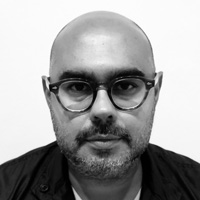
Brooklyn-based artist Andisheh Avini’s (b. 1974) practice includes painting, drawing, and sculpture, and often incorporates the traditional craft of marquetry. Avini explores the duality of his own identity by combining Iranian icons and motifs, from the decorative to the political, with Occidental traditions of minimalism and abstraction. In juxtaposing the sacred geometries of Islamic crafts with the irregularities and chaotic forms of nature, Avini reveals the distances between heritage, expectation, and the rhythms of everyday life. Avini’s approach speaks to a disparate, globalized society of nomads, and reflects a contemporary multicultural experience, marked by both collective and individual memory.
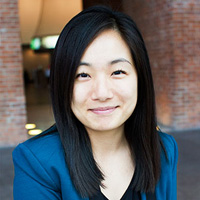
Connie H. Choi is the Associate Curator, Permanent Collection at The Studio Museum in Harlem, where she has worked on the exhibitions Fictions, Regarding the Figure, and Their Own Harlems. She is currently organizing a major traveling exhibition drawn from the museum’s permanent collection. Prior to joining the museum in February 2017, Choi was the assistant curator of American art at the Brooklyn Museum. Choi is a Ph.D. candidate in art history at Columbia University. She received a B.A. in the history of art from Yale University and an Ed.M. from Harvard University.
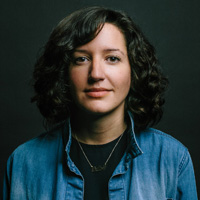
Patton Hindle is the Director of Arts at Kickstarter where she oversees the Arts team which helps visual and performing artists, arts organizations, and cultural institutions realize ambitious projects. Hindle was previously the Director of Gallery and Institutional Partnerships at Artspace and is a founder and current partner at Lower East Side gallery, yours mine & ours. She is a co-author of the forthcoming second edition of How to Start and Run a Commercial Art Gallery. Hindle was raised in London and attended university in Boston.
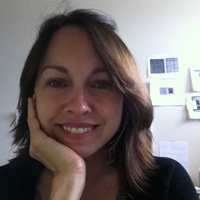
Harper Montgomery teaches in the Art and Art History Department at Hunter College in New York City. She has written for The Art Bulletin, Art Journal, and the Brooklyn Rail; and has organized exhibitions on art of the nineteenth-century, the twentieth-century, and the present for the galleries of Hunter College. Her book The Mobility of Modernism: Art and Criticism in 1920s Latin America was published last year by University of Texas Press and won the Arvey Foundation Book Award for distinguished scholarship on Latin American Art. Her current research concerns the ascent of artesaníawithin contemporary art spaces in Latin America during the 1970s.
Top image credit: Andisheh Avini, Untitled (wood, marquetry, assorted minerals), 2015. Photo credit Emily Hodes, courtesy Marianne Boesky Gallery.
News from the Art and Academic Worlds
posted by CAA — Aug 22, 2018
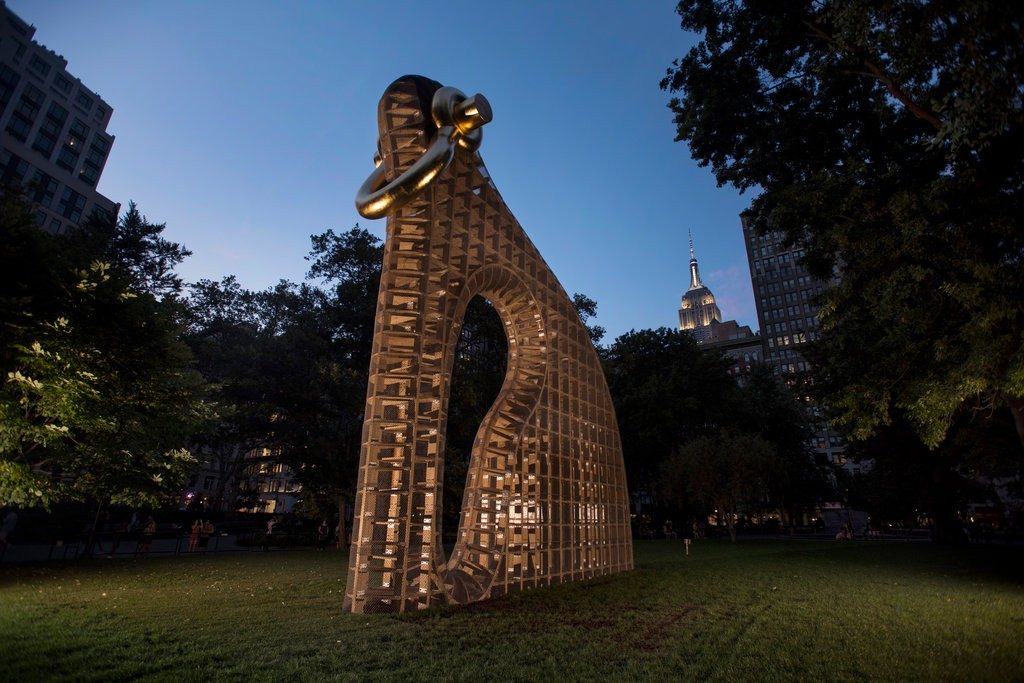
Martin Puryear’s sculpture, Big Bling, in Madison Square Park in 2016. Photo: Philip Greenberg for The New York Times, courtesy the artist and Matthew Marks Gallery
Artist Martin Puryear Chosen for US Pavilion at Venice Biennale
For the second year in a row, an African-American artist will represent the United States. (New York Times)
As Criminalization of the Arts Intensifies in Cuba, Activists Organize
Tania Bruguera and Coco Fusco are among the artists opposing the new legislation. (Hyperallergic)
Public Libraries are Reinventing Access to Higher Education
Bard College and the Brooklyn Public Library will soon launch their “microcollege,” the first ever accredited two-year associate’s degree program in a public library. (Mellon Foundation)
Casanova as Case Study: How Should Art Museums Present Problematic Aspects of the Past?
The Casanova exhibition provided a timely platform to grapple with an important issue. (ARTnews)
Don’t Even Think of Publishing in This Journal
What does it mean when a top journal is too swamped to take on more papers? A major higher education research journal is suspending submissions to clear out a two-year backlog. (Inside Higher Ed)
Uffizi Gallery’s Vast Sculpture Collection Goes Online in Interactive 3D Scans
Thanks to collaboration between the Italian gallery and Indiana University, hundreds of artworks are available as interactive 3D scans. (Hyperallergic)
New in caa.reviews
posted by CAA — Aug 17, 2018
Shana Cooperstein reviews Observing by Hand: Sketching the Nebulae in the Nineteenth Century by Omar W. Nasim. Read the full review at caa.reviews.
Itay Sapir writes about Georges de La Tour and the Enigma of the Visible by Dalia Judovitz. Read the full review at caa.reviews.
Andrew Turner discusses Dressing the Part: Power, Dress, Gender, and Representation in the Pre-Columbian Archives, edited by Sarahh E. M. Shcer and Billie J. A. Follensbee. Read the full review at caa.reviews.
CAA Receives Major Anonymous Gift to Support Art History Faculty and Students
posted by CAA — Aug 08, 2018
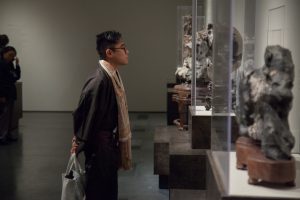
2018 CAA Annual Conference. Image: Rafael Cardenas
We are pleased to announce CAA has received a major anonymous gift of $1 million to fund travel for art history faculty and their students to special exhibitions related to their classwork. The gift will establish the Fund for Travel to Special Exhibitions, a new program to be administered and juried by CAA.
“This incredibly generous gift will not only support art history scholars and students for years to come, it is a powerful message to the visual arts field that their work is as important as ever,” said Hunter O’Hanian, CAA’s executive director. “The new Fund also reinforces CAA as the preeminent organization supporting and advancing professionals in the visual arts and design.”
Groundbreaking in its scope, the Fund for Travel to Special Exhibitions is intended exclusively to enhance the first-hand knowledge of original works of art. The Fund will support travel, lodging, and admission for art history students and faculty in conjunction with special museum exhibitions in the United States and throughout the world. Awards will be made exclusively to support travel to exhibitions that directly correspond to the class content. However, exhibitions on all artists, periods, and areas of art history are eligible.
Awards of up to $10,000 will be granted on a per project basis by a jury formed by CAA to oversee the Fund for Travel to Special Exhibitions.
Applications will be accepted by CAA beginning in fall 2018. All application criteria and information will be listed on the CAA website.
2018 Professional Development Fellowships for Graduate Students Now Open
posted by CAA — Aug 01, 2018
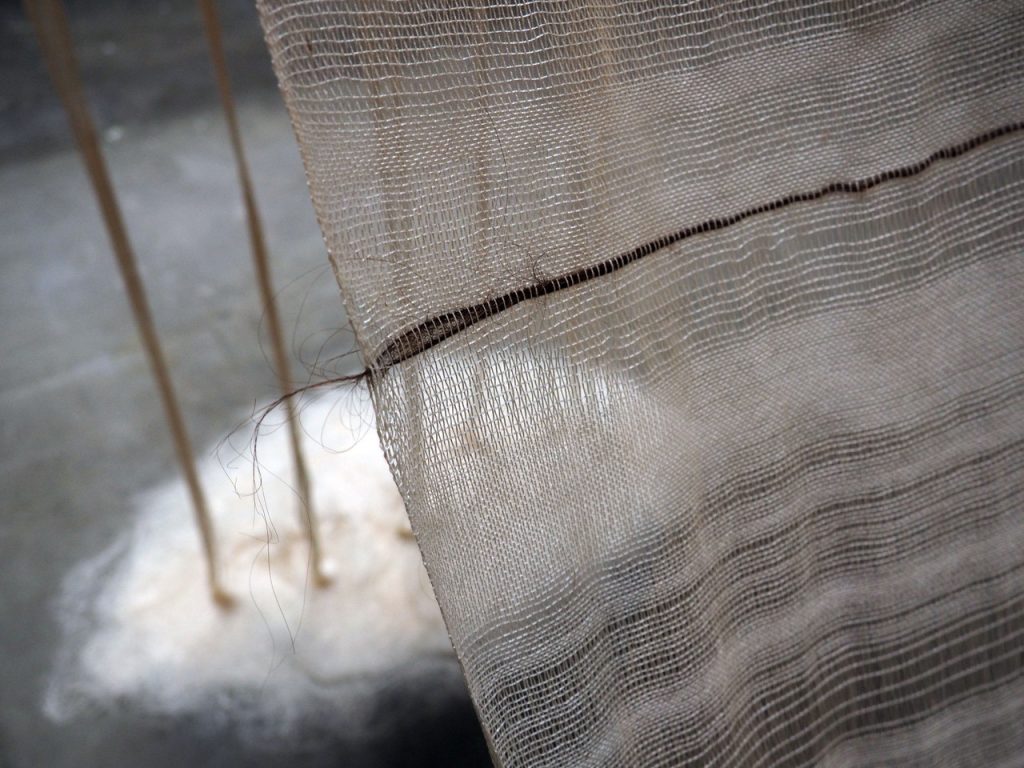
Brenna K. Murphy, Grief Work (Shroud). Detail. Cotton yarn and artist’s hair, 100 ft x 40 in. 2017 Professional Development Fellow in Visual Art.
The Professional Development Fellowships program supports promising artists, designers, craftspersons, historians, curators, and critics who are enrolled in MFA, PhD, and other terminal degree programs. Fellows are honored with $10,000 unrestricted grants to help them with various aspects of their work.
One award will be presented to a practitioner—an artist, designer, and/or craftsperson—and one award will be presented to an art, architecture, and/or design historian, curator, or critic. Fellows also receive a free, one-year CAA membership and complimentary registration to the Annual Conference. Honorable mentions, given at the discretion of the jury, also earn a free one-year CAA membership and complimentary conference registration.
CAA initiated its fellowship program in 1993 to help student artists and art historians bridge the gap between their graduate studies and professional careers. Past recipients include artists and thinkers such as Marin Sarve-Tarr (2015), Maggie Cao (2014), La Toya Ruby Frasier (2006), Risë Wilson (2002), Chitra Ganesh (2001), Miguel Luciano (2000), Miwon Kwon (1996), and Blake Stimson (1995), among many others.
ARE YOU ELIGIBLE?
CAA seeks applications from students who are current members; will receive their MFA or PhD degree in the calendar year 2019, following the year of application (2018 for the current fellowship cycle); and have outstanding capabilities and demonstrate distinction in their contribution to art history and the visual arts.
A jury of artists, curators, and other professionals will review all applications in fall 2018 and announce the recipients in January 2019.
HOW TO APPLY
DEADLINES
PhD Fellowship: October 1, 2018
MFA Fellowship: November 16, 2018
CONTACT
For more information about the CAA fellowship program, please contact Aakash Suchak, grants and special programs manager, at asuchak@collegeart.org.
Affiliated Society News for July 2018
posted by CAA — Jul 12, 2018
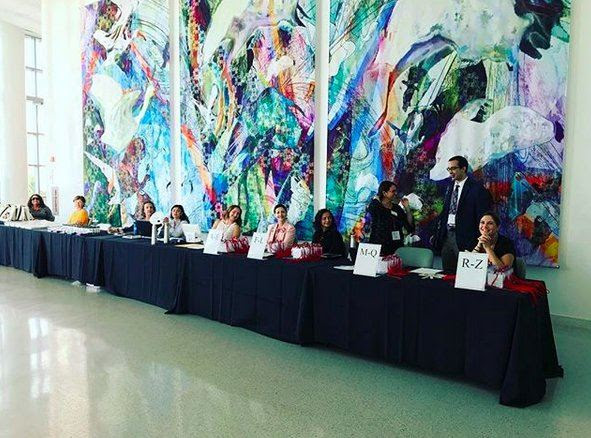
Presenters at the AAMG UMAC Annual Conference in Miami, June 21-24, 2018.
Affiliated Society News shares the new and exciting things CAA’s affiliated organizations are working on including activities, awards, publications, conferences, and exhibitions. For more information on Affiliated Societies, click here.
Art Historians Interested in Pedagogy and Technology (AHPT)
AHPT (Art Historians Interested in Pedagogy and Technology) has been an affiliate society since the 1990s and enjoyed a re-enlivened period from 2011-17. The aim of the Society was to provide a platform for teaching Art Historians to learn about and engage with new technologies that would enhance their pedagogy. Since the turn of the millennium, those of us who teach Art History have engaged deeply with multiple technologies. Particularly at CAA sessions, the Society has worked to have stimulating and educational presentations and workshops ranging in topics such as pedagogical philosophy and use of museum collections to hands-on opportunities to work directly with tools such as Voice-thread, Twitter, and OMEKA. As we continue to use and explore ever-evolving options for technological innovation within the field of Art History, the Society has noticed a trend toward self-training in new tech, and very little interest in the Society. Although CAA sessions have been popular and stimulating, there are many such sessions being offered by other groups and individuals, and thus the time for AHPT to dissolve is at hand. We are pleased to see the work of AHTR (Art History Teaching Resources) which continues to focus on teaching and learning, and so we point those of you also interested in these topics to spend some time on their website and look out for their sponsored sessions. Thank you so much for your support and interest in AHPT and hope to see you in New York in February! -Sarah J. Scott, AHPT President
Alliance for the Arts in Research Universities (a2ru)
Decipher
Announcing Decipher, a hands-on design research conference at University of Michigan / Stamps in partnership with the AIGA Design Educators Community and the new DARIA Network (Design as Research in the Americas). The event will address crucial themes of defining, doing, disseminating, supporting, and teaching design research.
Design educators and practitioners from all disciplines are encouraged to submit. There are also opportunities to engage as submission reviewers and for students to serve as conference volunteers. Learn more.
a2ru Circuits Webinar: Impacts Arts-Integrative and Interdisciplinary Practices on Research Universities
Wednesday, July 18, 2018
2:00-3:00pm EDT
Register HERE
Description: What are the roles and impacts of the arts, design, and interdisciplinary practice on teaching, research, and engagement in research universities? How do they impact students? Faculty? The community? Individual disciplines? What about the products and practices that emerge from the studio, the laboratory, and the community?
In a webinar on July 18, 2018, the a2ru research team will present a high-level overview of findings, including our synthesis of the results of over 300 interviews with faculty and academic leadership at over 38 research universities. We will also discuss resources for case-making, next-steps in our research process, and we’ll conclude by fielding questions and insights from participants.
This webinar will be recorded and posted on the a2ru website along with transcript following the session. More info at a2ru.org.
Association for Latin American Art
ALAA-Arvey Foundation Exhibition Catalogue Award
ALAA is pleased to announce its first annual ALAA-Arvey Foundation Exhibition Catalogue Award. The award will be presented to the lead author or authors of an especially distinguished exhibition catalogue of Latin American or Latinx art, from the Pre-Columbian era to the present, published under the auspices of a museum, library, or collection. The award is generously funded by the Arvey Foundation and consists of a $1,000 honorarium. We will present the award at the CAA annual meeting in February 2019. The name of the recipient(s) will appear in the newsletters of both ALAA and CAA.
For the February 2019 Award, we will evaluate exhibition catalogues on Latin American or Latinx art from the Pre-Columbian era to the present that meet the following criteria:
- Publication date between September 1, 2017 and August 31, 2018.
- Catalogues may be written in English, Spanish, or Portuguese.
- Single or multi-authored exhibition catalogues with a substantive text that advances art historical knowledge will be considered
- A three-person committee of accomplished art historians and curators, each with expertise in a wide geographical and temporal range, will evaluate the entries.
Publishers, authors, and others must contact the chair of the ALAA exhibition catalogue award committee by October 1, 2018 to verify whether a prospective entry is eligible for the competition according to the above criteria. Please include the following information: Title, author(s), and a general description of subject. If the catalogue appears eligible, the committee Chair will provide mailing addresses for all three committee members. Copies of catalogues are to be sent directly to each, and can be sent at any time over the summer but must be received no later than November 15, 2018.
Exhibition Catalogue Award Committee:
Chair, Diana Magaloni dmagaloni@lacma.org
Julia P. Herzberg julia.herzberg@gmail.com
James Oles joles@wellesley.edu
ALAA Article Prize
The Association for Latin American Art, an affiliate of the College Art Association, announces its First Annual Article Prize for a distinguished scholarly article on any aspect of Latin American/Latinx art, architecture, or visual culture, of any period from the Pre-Columbian era to the present, published in a peer reviewed journal, edited volume, or exhibition catalogue during the previous year. The award consists a $500 honorarium and will be presented at the ALAA business meeting at the annual meeting of the College Art Association in February 2019. The name of the recipient will appear in the newsletters of both ALAA and CAA.
For the February 2019 Award, we will evaluate articles that meet the following criteria:
- Publication date between September 1, 2017 and August 31, 2018.
- Essays may be written in English, Spanish, or Portuguese.
Essays will be evaluated by a three-person committee of accomplished art historians, each with expertise in a wide geographical and temporal range. For consideration, authors should send their articles as a pdf to the Chair of the ALAA article prize committee, Carolyn Dean csdean@ucsc.edu, no later than November 15, 2018. Peer nominations will also be accepted.
Committee:
Carolyn Dean, Chair csdean@ucsc.edu
Angelica Afanador jardindepomarrosa@gmail.com
Harper Montgomery hmontgom@hunter.cuny.edu
ALAA Annual Margaret Arvey Book Award
The Association of Latin American Art, an affiliate of the College Art Association, announces its Eighteenth Annual Book Award for the best scholarly book published on the art of Latin America from the Pre-Columbian era to the present. The award is generously funded by the Arvey Foundation and consists of a citation and a $1,000 honorarium. We will present the award at the annual meeting of the College Art Association in New York in February 2019. The name of the recipient will appear in the newsletters of both ALAA and CAA.
For the February 2019 Award, we will evaluate books on Latin American Art from Pre-Columbian to the present that meet the following criteria:
- Publication date between September 1, 2017 and August 31, 2018.
- Books may be written in English, Spanish, or Portuguese.
- Books may have one or more authors
The books will be evaluated by a three-person committee of accomplished art historians, each with expertise in a wide geographical and temporal range (Cynthia Kristan-Graham, Michael Schreffler, and Claudia Calirman). Publishers, authors, and others must contact Cynthia Kristan-Graham by October 1, 2018, to verify whether a prospective entry is eligible for the competition according to the above criteria. Please include the following information: Title, author(s), and a general description of subject. If the book appears eligible, she will provide mailing addresses for all three committee members. Copies of books are to be sent directly to each, and can be sent at any time over the summer but must be received no later than November 15, 2018.
Questions may be addressed to Dr. Cynthia Kristan-Graham, 589 Deer Run Rd., Auburn, AL 36832 or c.kristan.graham1@gmail.com.
ALAA Graduate Student Travel Award
We are pleased to announce the annual ALAA Graduate Student Travel Award. The award, generously funded by former ALAA president Patricia Sarro, will provide $500 toward expenses related to attending the CAA annual conference, ALAA business meeting, and ALAA sponsored sessions. Funds may be put towards hotel costs, registration, or airfare/ground travel. The awardee need not be presenting (although presenters are encouraged to apply), but should demonstrate a specific need to attend sessions or visit archives in the conference city. To apply, please send a letter of interest, including your current research area, name of your university, program, advisor, and specific purpose for attending to the conference by email to Michele Greet (mgreet@gmu.edu) by October 31. The awardee will be selected by the executive committee and will be notified of his/her acceptance by November 15. Funds will be paid upon receipt of the award, but awardee must submit receipts to ALAA verifying that funds have gone toward conference expenses (within 2 weeks of returning from the conference). The awardee is also expected attend the ALAA business meeting at the conference where he/she will be recognized as an award recipient. The awardee will also receive one year of complimentary ALAA membership.
Association for Modern and Contemporary Art of the Arab World, Iran, and Turkey (AMCA)
AKPIA@MIT | A Conversation on Modern Art in the Arab World and its Documents: Thursday, May 24, 2018
AMCA founding members Anneka Lenssen, Sarah Rogers and Nada Shabout held a conversation at MIT celebrating the launch of their new edited volume Modern Art in the Arab World: Primary Documents (2018). The event took place on Thursday, May 24, 2018 with a roundtable discussion moderated by AKPIA students Sarah Rifky and Suheyla Takesh.
Modern Art in the Arab World: Primary Documents (2018)–an anthology of translated art writing by artists and intellectuals in the Arab world of the twentieth century–offers an unparalleled resource for the study of modernism. Many of the published texts are appearing for the first time in English, and include manifestos, essays, discussion transcripts, diary entries and letters. The book is the eighth volume in The Museum of Modern Art’s Primary Documents series, which offers access to essential documents for the study of global modernism. This edition, includes sixteen new entries, by the editors and other scholars, and a new essay by the historian and Arab-studies scholar Ussama Makdisi providing a historical overview of the region’s intertwined political and cultural developments in the twentieth century.
During this event, the editors discussed how this project came about, the intricacies and challenges of the creating this archive, the challenges of organizing, selecting and contextualizing the material included in the book, and more broadly what bearings this project has on new histories of global modernism under construction.
Anneka Lenssen is Assistant Professor of Global Modern Art, at UC-Berkeley. She received her PhD in 2014 from the History, Theory, Criticism program and Aga Khan Program for Islamic Architecture at MIT. Her current book project, Beautiful Agitation: Modern Painting in Syria and the Arab East, is a study of avant-garde painting and the making of Syria as a contested territory between 1920 and 1970.
Sarah Rogers is an independent scholar. She earned her PhD in 2008 from the History, Theory and Criticism program, where she wrote her dissertation “Post-war Art and the Historical Roots of Beirut’s Cosmopolitanism.” She is a founding member of the Association for Modern and Contemporary Art of the Arab World, Iran and Turkey (AMCA) and is currently editing a collection of essays on the Khalid Shoman Private Collection.
Nada Shabout is a Professor of Art History and the Coordinator of the Contemporary Arab and Muslim Cultural Studies Initiative (CAMSCI) at the University of North Texas. She is author of Modern Arab Art: Formation of Arab Aesthetics (2007) and the founding president of the Association of Modern and Contemporary Art of the Arab World, Iran and Turkey (AMCA), and has served as Consulting Director of Research at Mathaf: Arab Museum of Modern Art, Doha. She has curated a number of exhibition including the inaugural show Sajjil: A Century of Modern Art, at Mathaf, in Doha in 2010.
Association for Textual Scholarship of Art History (ATSAH)
ATSAH Members Publications 2018
Sarah Lippert, University of Michigan at Flint
Space and Time in Artistic Practice and Aesthetics; The Legacy of Gotthold Ephraim Lessing (IB Tauris 2017).
Sarah Lippert, University of Michigan at Flint
Artistic Responses to Travel in the Western Tradition (Routledge 2018)
Sara Nair James, Professor of Art History, emerita, Mary Baldwin University
“Wit and Humor in Ugolino di Prete Ilario’s Life of the Virgin at Orvieto,” Source: Notes in the History of Art vol 36, no.3-4 (Spring/Summer 2017): 159-167.
Liana De Girolami Cheney, President of ATSAH, “Camillo Camilli’s Imprese for the Academies,” Journal of Literature and Art Studies Vol. 8. No. 4 April 2018): 589-613
Liana De Girolami Cheney, President of ATSAH, “Galileo Galilei’s Tomb in Santa Croce: Art and Science,” in Imagining Other Worlds: Explorations in Astronomy and Culture, eds. Nicholas Champion and Chris Impey (Bath, UK: INSAPIX and Sophia Center Press, 2018): 60-75.
Liana De Girolami Cheney, President of ATSAH, “Giorgio Vasari’s Planetary Journey,” in Artistic Responses to Travel in the Western Tradition, ed. Sarah Lippert (New York: Routledge 2018):156-169.
Andrzej Piotrowski, University of Minnesota
The Routledge Companion to Contemporary Architectural History (New York: Routledge, 2018).
Damiano Acciarino, Lettere sulle grotteschi: 1580-1581. Collana di Storia Dell’Arte Moderna, 2. Rome: Aracne, 2018.
ATSAH Award for Students and Scholars
In commemoration of our 30th anniversary, ATSAH plans to offer two awards: one prize for the best article by an emerging scholar (no higher than Associate level). The topic may range from classical to Pre-Raphaelite art, reflecting the aims of ATSAH. The second is a small travel grant for junior scholar presenting a paper an ATSAH session.
The board of ATSAH selects these awards.
For further data, contact:
Liana Cheney, PhD, President of ATSAH,
lianacheney@earthlink.net
Historians of Netherlandish Art (HNA)
HNA welcomed 250 participants for the ninth quadrennial HNA Conference held in Ghent, Belgium, May 23-26, 2018. HNA will move to a triennial format going forward, with the next conferences in 2021 and 2024. Please visit our HNA Conference webpage for more information: https://hnanews.org/news/opportunities/hna-conference/
The editors of JHNA are pleased to announce that the Samuel H. Kress Foundation has awarded the journal a grant to underwrite the costs of publishing a digital project in the next year. The project in question is Melanie Gifford’s “The Fall of Phaeton in the evolution of Peter Paul Rubens.” Melanie is Research Conservator for Painting Technology at the National Gallery of Art, Washington. Her project uses high-resolution zoomable images and interactive paint sample analysis to illustrate her discovery of two distinct campaigns of revision by the artist in The Fall of Phaeton. This new information has important implications for our understanding of the artist’s evolution: we see how he continued to engage critically with his experience in Italy (1600-1609) after he had returned to Antwerp, and we observe his creative process as he moved between paintings and rethought the efficacy of his compositions.
Articles can be submitted to JHNA at any time. Please see the following link: https://jhna.org/submissions/
CFP RSA 2019 Toronto
Netherlandish Art and Artists in Spain, 1400-1600
HNA-Sponsored Session
HNA invites papers to be presented at the annual meeting of the Renaissance Society of America (RSA) in Toronto that explore one of the many aspects of Netherlandish-Spanish artistic relationships, with a particular focus on the artists and works of art that were, at least once, physically situated in Spain.
Click here to see the CFP.
American Society for Aesthetics
The American Society for Aesthetics is pleased to announce its 76th Annual Meeting, October 10-13, 2018, in Toronto, Ontario, Canada. The meeting features dozens of sessions with papers, commentators, and panels on the arts. Toronto artist, Ilene Sova, will be the featured Danto speaker, speaking on Friday evening on “The Missing Women Project: Portraits as a Site of Community Impact.”
For more information on the meeting, please see our web site, with complete schedule, abstracts, and information on how to register.
The American Society for Aesthetics was founded in 1942 to promote study, research, discussion, and publication in aesthetics. “Aesthetics” is understood to include all studies of the arts and related experiences from a philosophic, scientific, or other theoretical standpoint, including those of psychology, sociology, anthropology, cultural history, art criticism, and education. We welcome work from all perspectives, including “analytic” and “continental” approaches. The ASA publishes the Journal of Aesthetics and Art Criticism and the ASA Newsletter. Both publications are free to members.
Visit our web site to learn more about us: http://aesthetics-online.org/
Join our Facebook page: https://www.facebook.com/groups/7399905817/
Follow us on Twitter: @ASA_aesthetic
Association of Academic Museums & Galleries (AAMG)
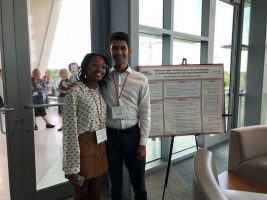
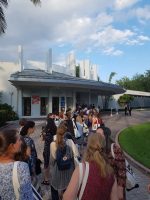 Close to 400 academic museum and gallery professionals attended the 2018 AAMG UMAC Annual Conference in Miami, Florida from June 21-24, 2018. Many thanks to all who attended, presented, and supported our program this year. We hope to announce our 2019 venue within the next few months. Stay tuned!
Close to 400 academic museum and gallery professionals attended the 2018 AAMG UMAC Annual Conference in Miami, Florida from June 21-24, 2018. Many thanks to all who attended, presented, and supported our program this year. We hope to announce our 2019 venue within the next few months. Stay tuned!
Society of Architectural Historians (SAH)
Travel to Cuba with architect Belmont Freeman, FAIA, December 1-14, for the 2018 SAH Field Seminar and enjoy an ambitious immersion in the architecture, urbanism, and landscape of the country, covering territory from Havana in the west to Guantánamo, Cuba’s eastern-most province.
The first five days will concentrate on the capital city of Havana and its environs, examining the colonial architecture of the old city, early and mid-century modernism, and the radical avant-garde of the post-revolution period. The second week will take us on an overland journey through a string of historic cities—and beautiful countryside—ending in Santiago de Cuba, Cuba’s #2 city and very Caribbean counterpart to cosmopolitan Havana.
Travel to Cuba, and to Havana in particular, has in recent years become easier for Americans. This tour, therefore, is designed to take SAH members away from tourist centers and to places that they would be unlikely to visit on their own.
An SAH Study Program Fellowship is available for a graduate student or emerging scholar to participate in the tour. The application deadline is Friday, August 3.
Space is limited. The registration deadline is Friday, August 3.
Community College Professors of Art and Art History (CCPAAH)
The Community College Professors of Art and Art History have two opportunities to submit presentations for our conference panels next year. Please consider submitting to our session at the 2019 College Art Association Conference in New York. See page 11 for our session, Collaborations in and out of the Classroom: New Ideas and Interdisciplinary Approaches in the CAA Call for Participation: http://www.collegeart.org/pdf/programs/conference/CAA-CFP-2019.pdf
We will also have an opportunity to submit for our panel at the FATE (Foundations in Art Theory and Education) Conference in Cincinnati next spring. Watch the FATE website https://www.foundations-art.org/conferences for more information about the CCPAAH Session and the details for submissions. For more information contact Susan Altman, ccpaah@gmail.com and submit for CAA by August 6 to: Saltman@middlesexcc.edu
International Sculpture Center
Registration is open now for the 28th ISC Conference: Defining Moments in the Face of Change, and is available to ISC members, non-members, students, and all those with an interest in sculpture. The conference will include keynote speaker, Doris Salcedo, as well as engaging panel discussions, networking events, and exciting tours, & optional activities. https://sculpture.org/philly2018/
The ISC’s Cultural Arts Tour is taking an intimate group of contemporary art enthusiasts to the elusive island of Cuba. Through the help of a local guide, access to artist’s studios, and private museum tours, our attendees will immerse themselves in the color and culture of Cuba. Learn more at https://www.sculpture.org/cultural-tours/cuba
SECAC
SECAC awards two $5,000 prizes annually to members: The Artist’s Fellowship, awarded for work on a specific project, and the William R. Levin Award for Research in the History of Art, for work on a publication. Artist’s Fellowship entries must be submitted by August 14, 2018, at https://secac.secure-platform.com/a/solicitations/home/3; the Levin Award entries must be submitted by August 31, 2018. For more information see secacart.org, Awards.
SECAC invites individual paper proposals for the SECAC at CAA 2019 session, Below the Mason-Dixon Line: Artists and Historians Considering the South. To be considered please submit the following materials to the session chair Rachel Stephens at rachel@ua.edu, by July 27: proposal form http://www.collegeart.org/pdf/programs/conference/CAA-CFP-2019.pdf, abstract, brief statement of expertise, and shortened CV. Accepted participants must be members of both SECAC and CAA.
Session abstract: From the eighteenth-century onward artists have turned their attention to sites and scenes of the American South. In the years before the Civil War, southern art tended to glorify the plantation while striving to maintain the social order. Stereotypes initiated during the antebellum period continued unabated post-war. Many of these continue in various forms today. This session invites papers by both artists and scholars whose work investigates the rich history of the American South. Papers considering any medium will be considered.
The 74th Annual SECAC Conference, hosted by the University of Alabama at Birmingham, will be held October 17 through 20, 2018. Offsite events include a keynote address by Andrew Freear of Auburn University’s Rural Studio and a reception to view the exhibition Third Space/Shifting Conversations about Contemporary Art at the Birmingham Museum of Art, and the annual SECAC Artist’s Fellowship and Juried Exhibitions’ reception at will be held at UAB’s Abroms-Engel Institute for the Visual Arts. Conference registration opens August 1.
The International Art Market Studies Association (TIAMSA)
The conference “ART FOR ALL PEOPLE? QUESTIONING THE DEMOCRATIZATION OF THE ART MARKET” takes place in Vienna, Austria, 27-29 Sept 2019.
TIAMSA members go FREE, non-members fees are € 30 / 15 (concessions).
The conference has an exciting pre-program on Thu 27 with a tour of viennacontemporary art fair or an insider’s tour to the archive of the Belvedere Research Center.
We look forward to seeing you there!
Foundations in Art: Theory and Education (FATE) News
http://www.foundations-art.org/
Coming up in July: Submit your paper proposals for panels and workshops! FATE’s 17th Biennial Conference, “Foundations in Flux,” will be hosted by Columbus College of Art & Design in Columbus, Ohio on April 4th-6th, 2019. http://www.foundations-art.org/conferences
Positive Space is FATE’s bi-monthly podcast providing opportunities for those passionate about art foundations to discuss and promote excellence in the development and teaching of college level foundations in art & design studio and history classes.
Episode 33 [ 6.27.18 ] Positive Space sits down with Anthony Watkins, Associate Professor of Graphic Design at Sam Houston State University. Watkins discusses foundations effect on Graphic Design, teaching professionalism in his field and inspirations for students.
Episode 32 [ 6.13.18 ] Positive Space speaks with Michael Marks, Associate Professor of Art and Foundations Program Coordinator at the South Carolina School of the Arts at Anderson University. Michael discusses the foundations program at Anderson University and the release of FATE in Review.
Episode 31 [ 5.23.18 ] In this episode Positive Space speaks with Jesse Payne, Head of the Drawing Studio and Assistant Professor in the Art & Design Foundations Department at Virginia Commonwealth University, based in Doha, Qatar. Mr. Payne discusses the opportunities created teaching at an international university.
If you have podcast ideas, contact us! Positive Space has a phone number: 904-990-FATE. Give us a call & record a message today or visit: http://www.foundations-art.org/positive-space-podcast
Join us September 14-15, 2018, for a Regional FATE Conference at the University of Central Florida in Orlando, Florida for a symposium to share your new and developing pedagogical approaches, curriculum, and projects. This will provide the unique opportunity to hear fellow art colleagues share their experiments, successes, and failures and how they will continue to change in the future. https://www.foundations-art.org/regional-events
International Association of Art Critics (AICA-USA)
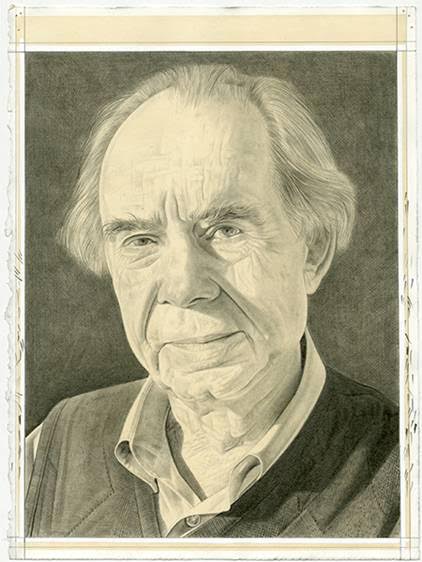
Phong Bui, Portrait of Irving Sandler, 2006, pencil on paper
Announcing the AICA-USA Irving Sandler Award for Distinguished Art Criticism
The American chapter of the International Association of Art Critics (AICA-USA) is pleased to announce the establishment of the AICA-USA Irving Sandler Award for Distinguished Art Criticism.
As an organization devoted to serving art writers and critics, we are committed to promoting and honoring excellence in young art critics. At a time when the very role and value of art criticism are in question, we look for guidance and inspiration to esteemed art critic and beloved board member and friend, Irving Sandler, who has tirelessly illuminated the role of art, artists and art criticism in the 20th and 21st centuries. AICA-USA will bestow The AICA-USA Irving Sandler Award for Distinguished Art Criticism to a worthy young art critic on an annual basis.
This award marks a continuation of AICA-USA’s dedication to young critics and to excellence in art writing, exemplified by its existing programs: The Young Art Critics Mentoring Program, organized in partnership with the Cue Art Foundation; the Art Writing Workshop, a partnership with the Creative Capital | Warhol Foundation Arts Writers Grant Program; and the annual Distinguished Critic Lecture, hosted in collaboration with the Vera List Center for Art and Politics.
Design Incubation
The Fellowship Program at Design Incubation
Application deadline: Sept 1, 2018
Fellowship dates: January 10-12, 2019
Location: St. John’s University, Manhattan Campus, 51 Astor Place, New York, NY 10003
Target Audience: Design academics in one or more of the following areas: graphic design, information design, branding, marketing, advertising, typography, web, interaction, film and video, animation, illustration, game design. Full-time tenure track or tenured faculty are given preference but any academic may apply. Applicants who are tenure track or tenured faculty are given first priority but other faculty or independent researchers may apply.
Format: All Fellows accepted into the program participate in the Fellowship Workshop as part of the overall experience. The Fellowship workshops offers participants the opportunity to share and develop ideas for research and individual writing projects while receiving constructive feedback from faculty mentors and peers in their field.
Fellows arrive with a draft of their writing and work on this specific project throughout the various sessions of the Fellowship Workshop. Each meeting includes a number of short informational sessions and a session devoted to analyzing and editing written work. The remainder of the 3-day workshop will be focused on activities which allow participants to share their projects with peers and receive structured feedback. Between sessions, Fellows will have time to execute revisions, review others participants work, and engage in discussions. Initiation of and work on collaborative projects is encouraged.
For more further details and to apply visit the website:
https://designincubation.com/the-fellowship-program-at-design-incubation/
To apply visit the application details and online form:
https://designincubation.com/fellowship-application-process/
For Frequently Asked Questions visit the FAQ page:
https://designincubation.com/fellowship-faqs/
Association of Print Scholars (APS)
The Association of Print Scholars (APS) is currently accepting submissions for the upcoming session at the 2019 College Art Association Annual Meeting “Coloring Print: Reproducing Race Through Material, Process, and Language” (New York, 13-16 Feb 2019). Deadline: August 6, 2018.
APS is pleased to award its first annual Collaboration Grant to Self Help Graphics & Art, in order to provide funding for honoraria so that artists may participate in panel discussions related to the organization’s 45th anniversary exhibition, Entre Tinta y Lucha (Between Ink and the Struggle). The APS Collaboration Grant, which carries a $1,000 prize, follows the mission of APS and supports innovative scholarship about printmaking and fostering dialogue among members of the print community. The deadline for the 2019 Collaboration Grant is December 1, 2018.
Rebecca Capua, Associate Paper Conservator at the Sherman Fairchild Center for Works of Art on Paper, The Metropolitan Museum of Art, has been awarded the 2018 Schulman and Bullard Article Prize. Capua’s article, “Japonisme and Japanese Works on Paper: Cross-cultural and hybrid materials” was published in Adapt and Evolve: East Asian Materials and Techniques in Western Conservation. The Schulman and Bullard Article Prize, which carries a $2,000 prize, is generously sponsored by print dealers Susan Schulman and Carolyn Bullard. Following the mission of APS, articles can feature aspects of printmaking across any geographic region and all chronological periods. APS is currently accepting submissions for the 2019 prize until January 31, 2019. Visit our website for more information: https://printscholars.org/



